Category Archives: Mennonite
Vietnam Fifty Years Later
I came of age during the Vietnam War. During my junior year of high school, I braced for the draft lottery system, a process whereby I would be assigned a number that could drag me off to the other side of the globe. But, fifty years ago, in January 1973, the Vietnam draft ended. I intended to do alternative service as others in my church and family had before me.
I remember a buddy in high school who wanted nothing more than to fight communists in Vietnam. In studying the Vietnam Veterans Memorial in Washington, D.C., I’ve never discovered his name on the wall, so he must have made it through the hell of fighting in Southeast Asia.
For the Mennonite missionaries and MCC workers who served in Vietnam, it was challenging for them to communicate the moral problems of U.S. engagement in Vietnam. Missionaries lived and worked in South Vietnamese neighborhoods where they heard helicopters strike with blazing fury and watched U.S. bombers fly overhead and drop deadly explosives. They tried to distinguish themselves from U.S. soldiers.
It was difficult for a young Mennonite surgeon to watch deadly attacks near him and stitch up the wounded in his evangelical hospital. The moral complexities he and others faced are easy to spot when reading articles by Mennonites who served in Vietnam during the war. They had volunteered to serve as missionaries or MCC workers, but they felt called to communicate with folks back home about the destructive havoc and death dealt by their government.
I remember reading Time and Newsweek while in middle and high school and seeing images of the war. We watched some black and white television in my home, enough that I could observe the Southeast Asia violence. It was my war because I thought Selective Service would call me up next for the draft, and Vietnam helped clarify my beliefs about peace.
At times the Mennonite personnel in Vietnam found their relations strained with other missionaries. Mennonites believed in peace, had come to serve, and generally chose not to use U.S. military air transport in their relief efforts. Other agencies used the U.S. military transport system and supported the war.
I heard about the young Mennonite volunteer from Ohio who vanished while serving in Vietnam, never heard from again. Mennonites served in Vietnam, and they did their best to communicate about the horrible conditions the people of Vietnam faced. They wrote letters of concern to their churches, their members of Congress, and the President. Some refused to serve, and one young man near my home burned his draft card. On the other hand, during the Vietnam War, 1964-1975, hundreds of Mennonite young adults who were conscientious objectors to war chose voluntary service in the U.S. or with international development agencies.
As U.S. troops departed Vietnam in 1973-75, and the last helicopter frantically rose from Saigon, a Mennonite Central Committee worker observed the ugly long-term effects of the war. Several million unexploded bombs, artillery shells, and mortar rounds littered the fields and forests of Vietnam.
Many from my generation served in the military as best they could during the Vietnam War, responding as good citizens to the demands of their commanders. I, however, look to the voices of peace from those who worked in Vietnam, messengers of a different kingdom, entangled in moral dilemmas that got them criticized by folks back home. I hope leaders today, fifty years after the draft ended in “my war,” can learn from the impact of getting involved in wars on distant shores. As in Vietnam, it can get ugly.
Voice of His People
Looking for a Common Anabaptist Faith
by Elwood E. Yoder
I attended the Old Order Mennonite funeral of Lewis G. Martin, a distinguished minister in the Riverdale Conference of Virginia. On a winter’s day, December 27, 2022, I made a journey from my home in Virginia Mennonite Conference to an expression of Anabaptism very different from mine. At Pleasant View Old Order Mennonite Church, Dayton, Virginia, I found common faith in the singing, messages, and relationships I experienced.
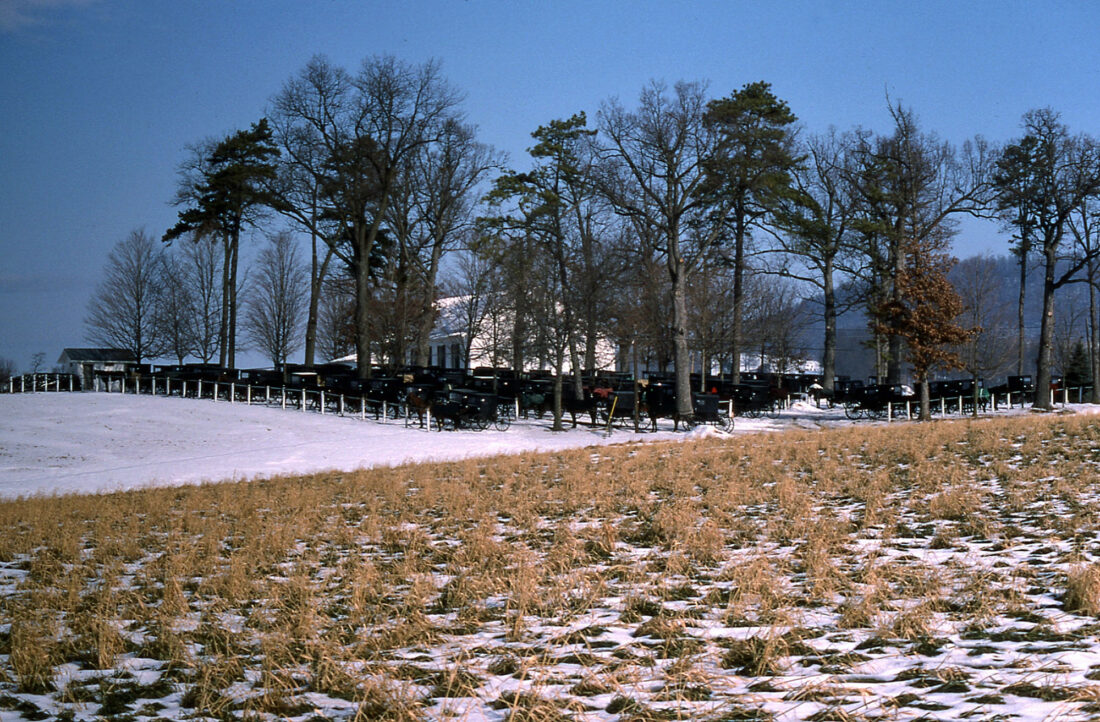
We have over fifteen different Mennonite groups in the Shenandoah Valley of Virginia. The cultural differences between my community in the Virginia Mennonite Conference and the Old Order groups in Rockingham County are about as far as the divide stretches. Two Virginia Conference pastors joined me in paying respects to brother Lewis G. Martin (1932-2022). We drove our car around buggies on the way to the funeral, and we slowed down because of the numerous black-clad Old Orders walking to the funeral on a bright mid-winter morning. Buggies with horses tied to hitching posts filled the church lot, line after line of them, so the automobiles parked across the road in a field.
I wanted to pay my respects to Old Order Minister Lewis G. Martin. The ninety-year-old leader in our community, ordained fifty years ago, was widely known and appreciated. I only met Lewis a couple of times, but he often provided information about the Old Order community to former editors of the Shenandoah Mennonite Historian and me. Lewis understood that someone needed to speak from within the Old Order community to Anabaptists beyond and offer details about the group’s size and history. Many buses and van-loads from local educational and cultural groups heard Lewis when they toured the Old Order community. When requested, Lewis took time away from his harness and leather goods shop, his bi-vocational means of making a living, and answered questions about the Old Order communities.
Six years ago, a busload of Mennonites took a tour of the Old Order community in Rockingham County. When we stopped at the Pleasant View Old Order meetinghouse, Lewis G. Martin spoke to us. At eighty-four, Lewis ably interpreted the meaning of the 1901 division in our community from which the Old Orders came. He discussed the late nineteenth-century troubles in Virginia Conference that led to sixty-nine being removed and starting the Virginia Old Orders. Lewis freely shared details about the order of his services, patterns of worship, length of sermons, and singing. I still value the notes I took when our large group listened to Minister Lewis G. Martin share his Anabaptist faith. He patiently answered all our questions.
As I make acquaintances and new friends across Mennonite groups in the Shenandoah Valley, I keep looking for our common Anabaptist faith. At Lewis’ funeral, I found Anabaptist faith in the lyrics and four-part harmonies of songs from a nineteenth-century hymn book placed in a wooden pew rack. Only the words appeared in the little book, but I soon joined the approximately 450 people inside the meetinghouse who were lifting their voices in song to God. Men around me sang the bass part, and I quickly caught on and entered the hymns. The singing was slow, mournful, and reflective of the community’s genuine heartfelt loss of a respected senior minister. The harmonies and theology about eternity gave me time to think about my own frailties and brief time on this planet.
Lewis G. Martin told our tour group that the Virginia Old Orders have fellowship with groups in other states. So, among the four sermons preached during the two-hour funeral service were visiting ministers from Berks County, Pennsylvania, and another minister from an Old Order community in Canada. Both visiting ministers had a Pennsylvania German accent, though they spoke in English at Lewis’ funeral because Virginia Old Order Mennonites speak English. The Riverdale Conference has a group of families who moved to a new settlement in Greenfield, Ohio.
Sitting next to me on the hard wooden slatted bench was a man who held a young son in his lap and another six or seven-year-old son who sat at the end of the bench. Both boys sat quietly, did not have toys to play with, and did not go out during the two-hour service. More importantly, this generous man answered my whispered questions about the Old Orders. There was no program to look at, and no one announced the names of the ministers who spoke, but my new Old Order friend helped me as I scribbled notes. Twice we knelt for long prayers with deep meaning of faith embedded in the minister’s words.
When the service began, I noticed the windows were opened from the outside, allowing a winter’s day breeze to keep the large audience comfortable. Attendees filled every bench. But the windows were opened so the dozens of boys and young men who had no seats and stood outside could listen to the sermons through the windows. With no microphone, it was hard for me to hear inside, and I suspect the fellows outside heard very little. The Pleasant View Order Mennonite meetinghouse has an electric line attached, but it is only used to power the forced-air furnace in the basement. There are no electric lights in the building.
Three years ago, I wrote Lewis G. Martin a letter, asking him about which side of the auditorium the women sit on in the Old Order community. He cordially replied with a handwritten note. Facing the audience from the pulpit, he explained that the women sit on the right, similar to the other Mennonite churches in the Valley during the nineteenth century. Men at the funeral wore plain black coats and black hats. Hooks on the wall all around the interior provided a place to hang them during the service. Looking from the long nineteenth-century style wooden minister’s pulpit, with about ten ordained men seated behind on a raised platform, women and girls sat on the right side of the three-foot wall in the center of the room. They wore funeral black, including their tightly-tied bonnets.
My Anabaptist heritage is Amish-Mennonite, going back eleven generations to the seventeenth-century Amish division in Europe when Yost Yoder chose the Amish side of that split. My parents left the Amish and joined the Conservative Mennonite Conference in 1950, and I joined the Mennonite Church in 1981. I have hundreds of relatives among plain Anabaptist groups in Central America and the United States. So, when I went to Lewis’ funeral, I wanted to pay my respects since I’m on a journey to find common Anabaptist faith among friends and neighbors in the Shenandoah Valley. Lewis generously provided information for my research, writing, and editorial work.
In two years, we will remember and notice the 500th anniversary of the beginning of the Anabaptist movement in Zurich, Switzerland. May we, in our Anabaptist communities, regardless of our chosen practices, find common faith in God, Jesus Christ our Savior, and the illimitable love and charity of the Holy Spirit, which can join us together in Christian unity.
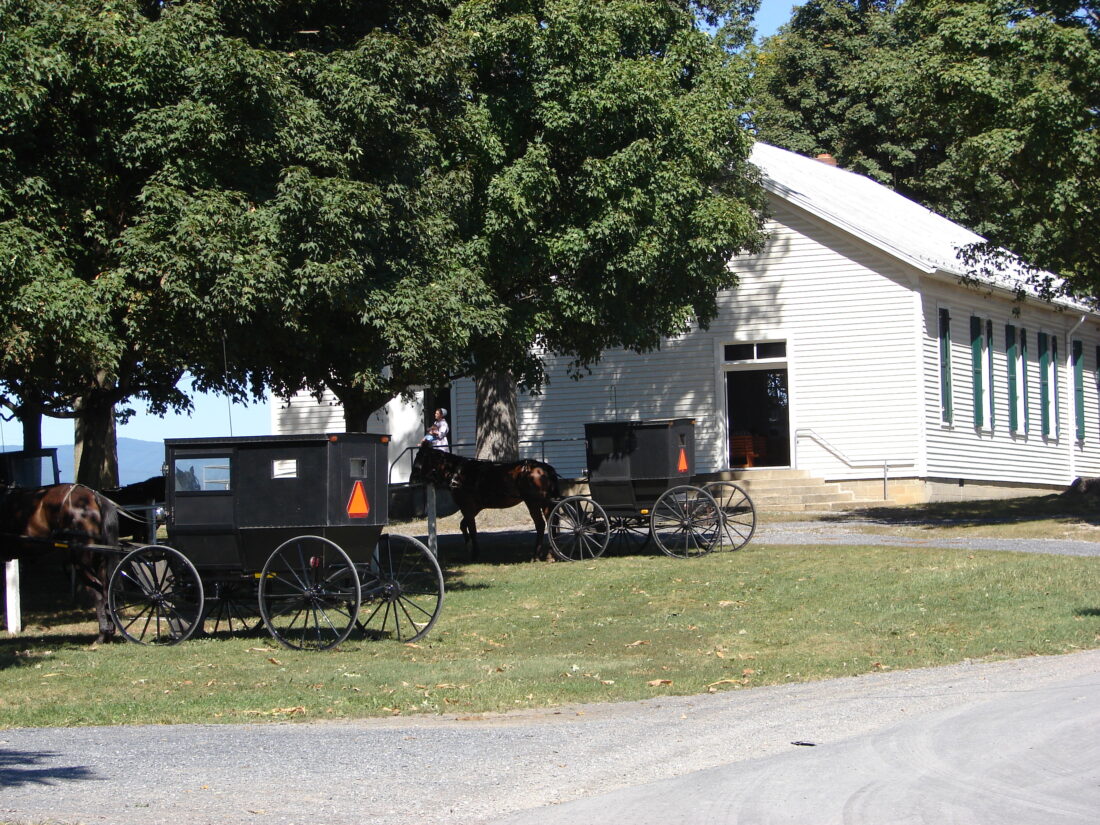
Harmonia Sacra Singing Jan. 1, 2023
The annual Harmonia Sacra singing in the Shenandoah Valley took place on New Year’s day, as it has since 1902. Around two hundred singers attended, from numerous religious groups and twelve states. About twenty song leaders led twenty-four hymns from Joseph Funk’s Harmonia Sacra songbook.
I especially liked the song called Lexington, by William Cowper, 1779: “Sometimes a light surprises the Christian while he sings. It is the Lord who rises, with healing in His wings; When comforts are declining, He grants the soul again a season of clear shining, to cheer it after rain.”
We sang this year at Park View Mennonite Church (pictured), Harrisonburg, Va., since the traditional site, Weavers Mennonite Church, was being renovated.
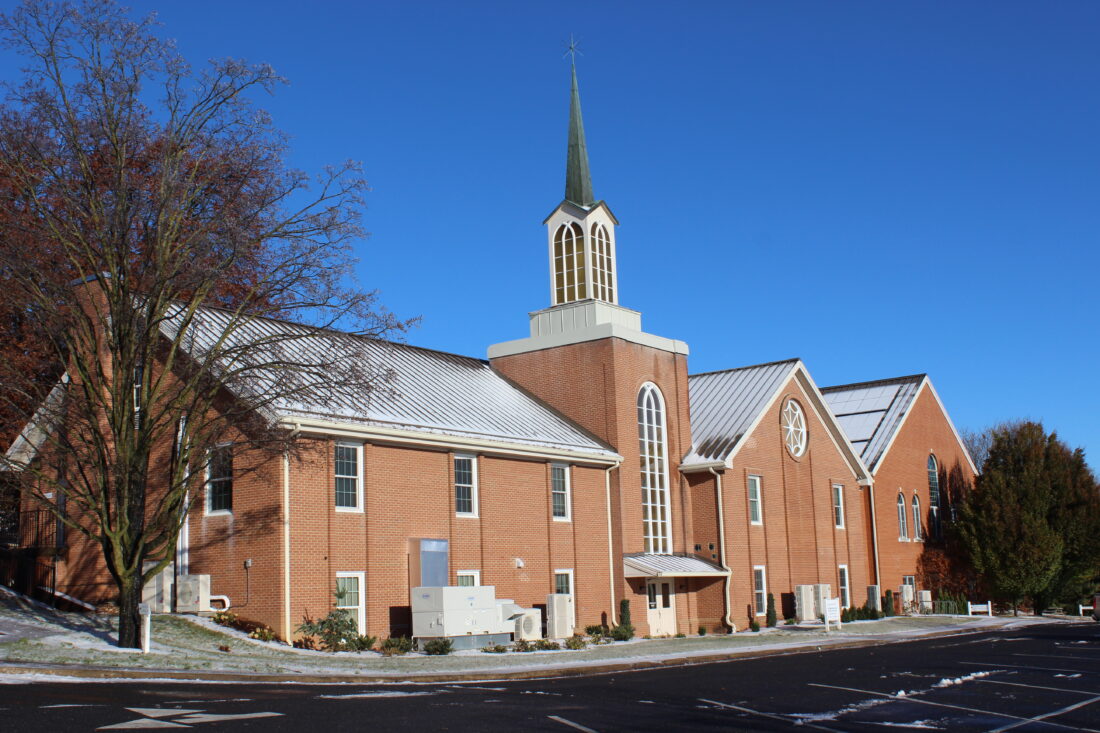
The Holy Spirit Gives Gifts
Buckhorn Mennonite Church
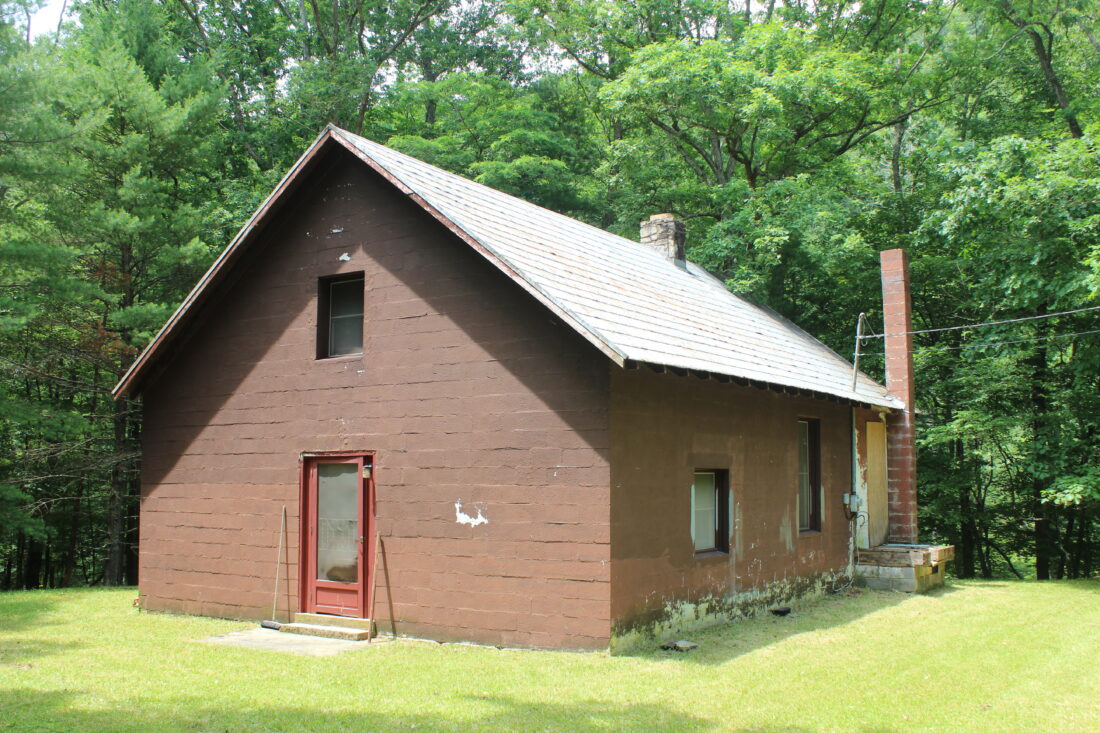
Buckhorn Mennonite Church began in 1930 when itinerant ministers invited people to gather and hear preaching in the local public schoolhouse. For forty-three years, Buckhorn church served a remote highlands community in Hardy County, West Virginia. In 1973, Buckhorn merged with nearby Cove, Cullers Run, and Mt. Hermon to form Mathias Mennonite Church, an MC USA congregation in the Virginia Conference.
Young adults from Trissels, Zion, and Lindale congregations followed their ministers into the highlands, teaching Summer Bible School and Sunday school during the ‘30s and ‘40s. Maude Geil (Lantz), twenty-one, taught Bible School at Buckhorn in 1940. During the day, Maude instructed children in the schoolhouse or outside, and she stayed overnight in a tent or a trailer that Northern District business people supplied for the two-week Summer Bible School sessions.
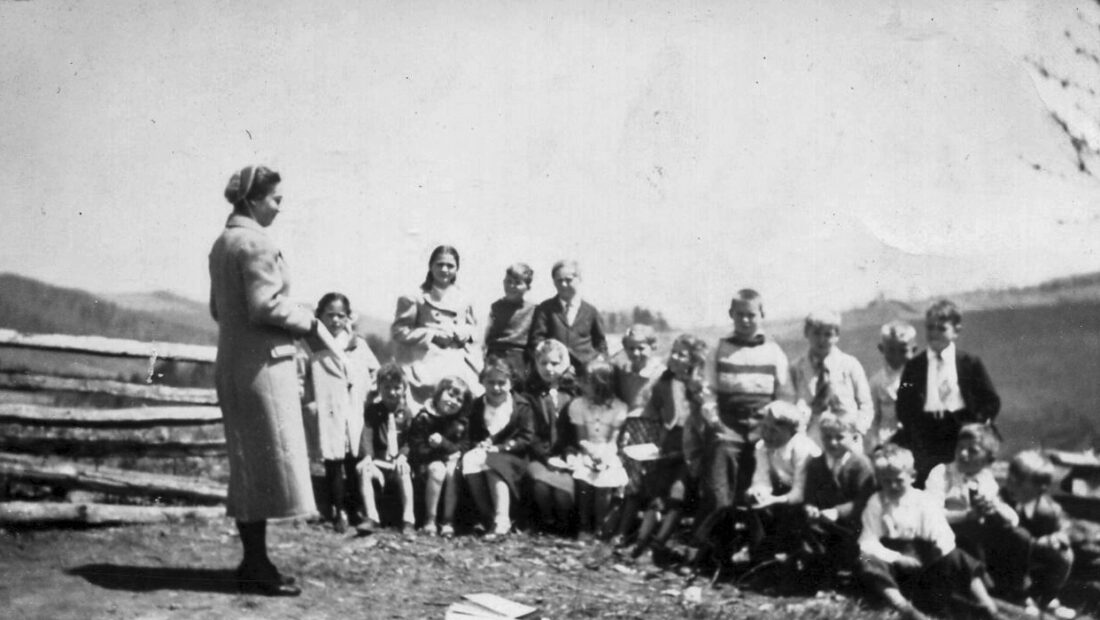
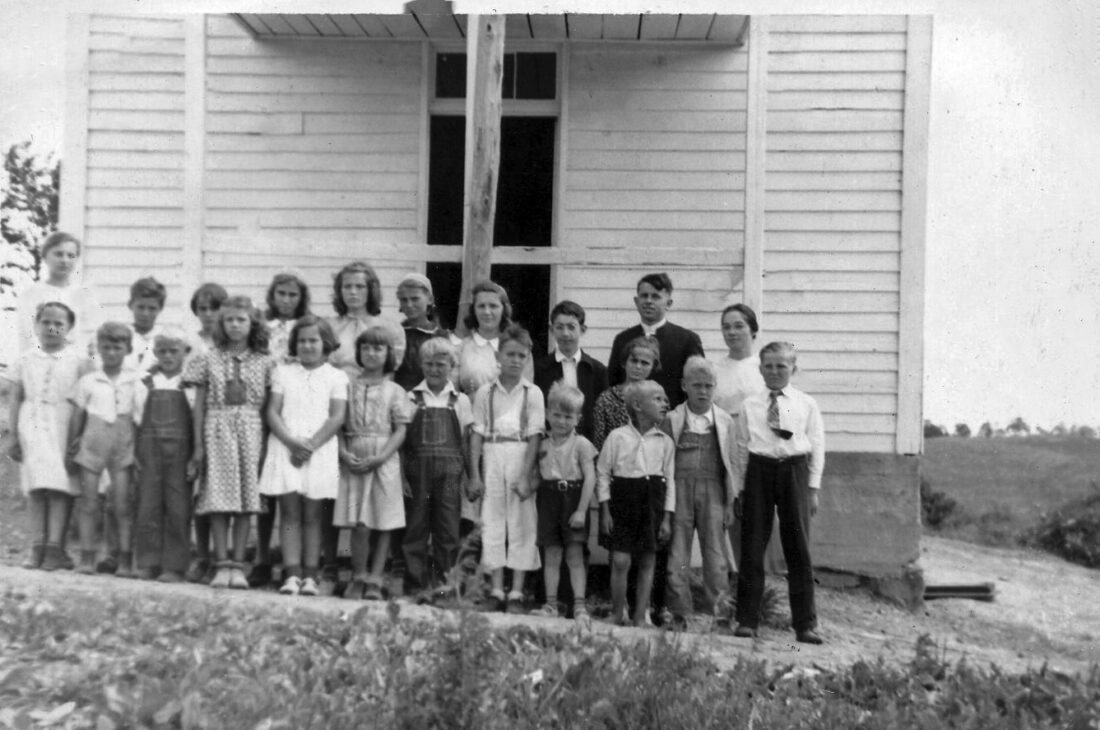
Young adults like Maude Geil, Robert Alger, Kathryn V. Showalter (Shank), and Linden Wenger supportively drove to Buckhorn, about thirty miles north of Broadway, Va., to teach and encourage the folks in this remote region. Dozens of Virginia Conference young adults taught Summer Bible School in the highlands during the ‘30s and ‘40s.
A small Mennonite community emerged at Buckhorn in the 1930s, with ministers on a preaching calendar coming to the schoolhouse about once a month for worship services. During winter, services didn’t always occur because of impassable roads. But there was a cycle of annual communion services and occasional baptisms when a bishop came to lead the service.
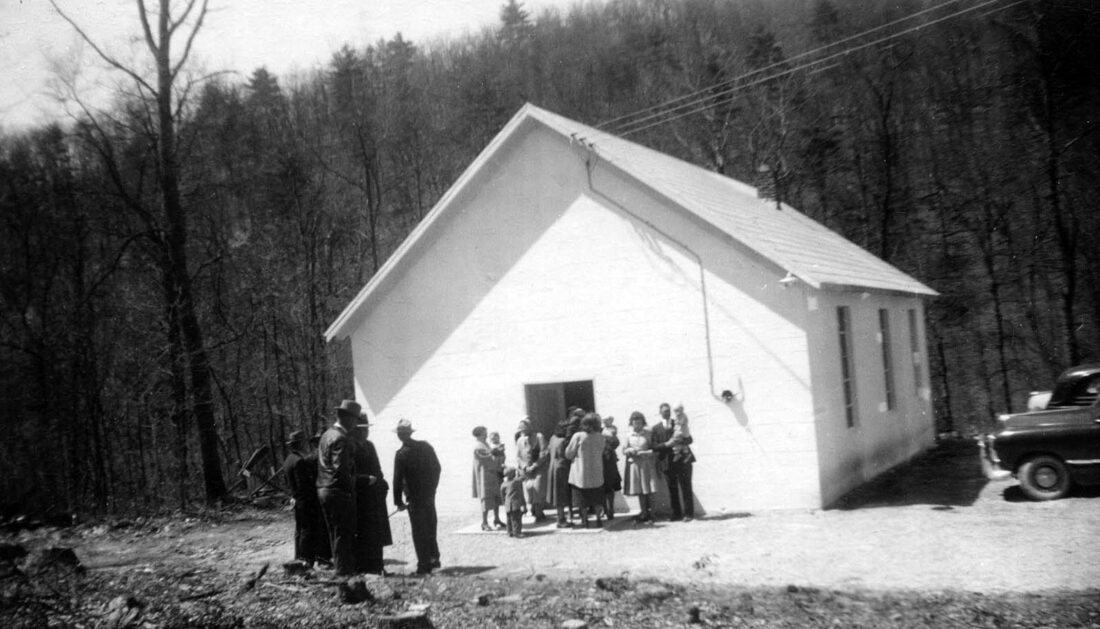
Buckhorn was among two dozen Northern District congregations that emerged in the early twentieth century missions awakening, the work of Virginia Conference itinerant ministers in the highlands of Virginia and West Virginia. Mennonite youth followed, like Helen Trumbo (Shank), who, at 17-18 years of age, taught five Bible School sessions of two weeks each during one summer in the early 1940s.
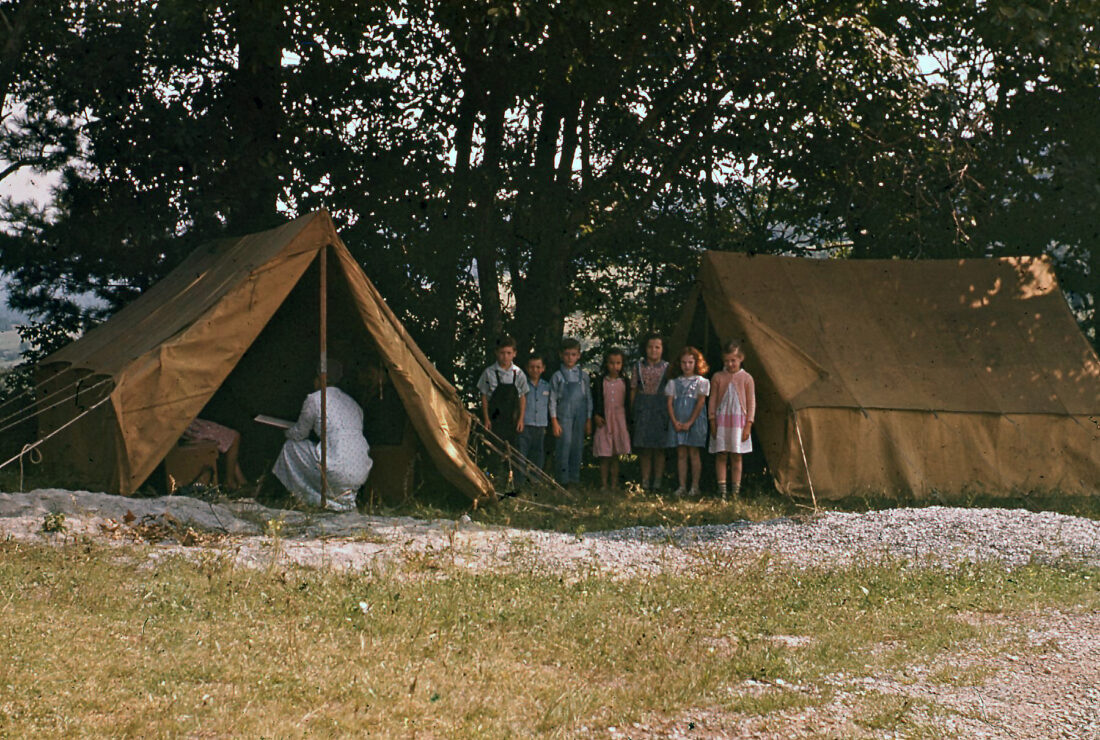
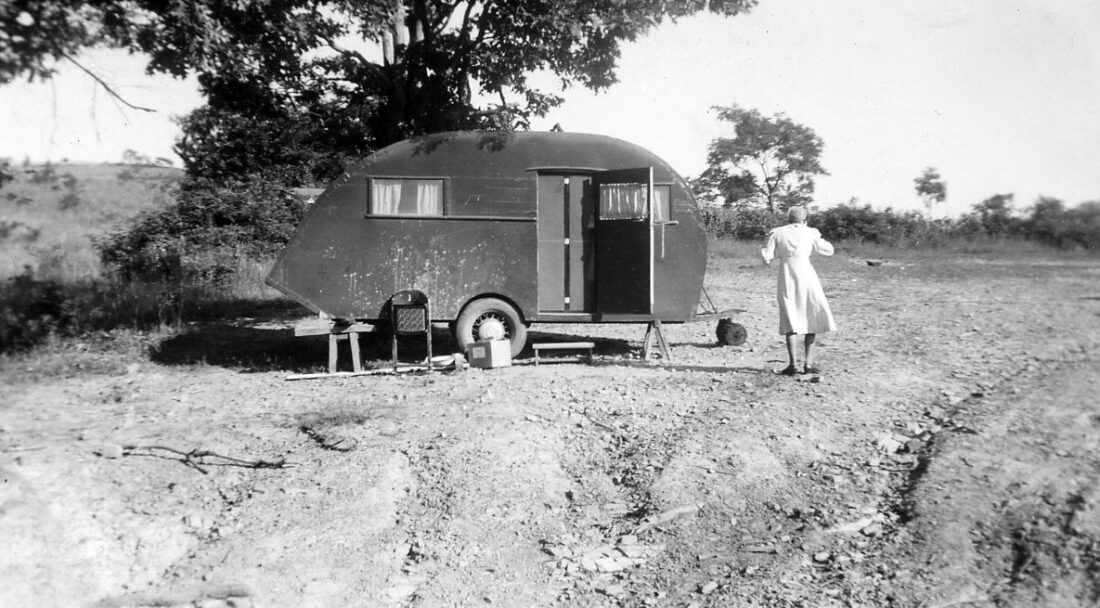
In 1948 the small Mennonite congregation in Buckhorn asked District ministers to help them build a meetinghouse. In May 1949, Bishop Timothy Showalter preached a dedication sermon for the new cinderblock building. Mennonite evangelist William Jennings, from a Virginia Conference congregation in Tennessee, followed with revival meetings at the church.

During the 1930s and ‘40s, dozens of young adults in Virginia Conference taught Summer Bible School in the highlands. At the same time, city mission churches began, prompted by dynamic mission energy. Further, missionary speakers from India, Africa, and South America helped Virginia Mennonites see beyond their home-based mission efforts. In one remote mountain setting, however, at Buckhorn Mennonite Church, near the Lost River State Park, Mathias, W.Va., Conference ministers and lay workers helped build a congregation during a several-decade season of Holy Spirit-inspired mission.
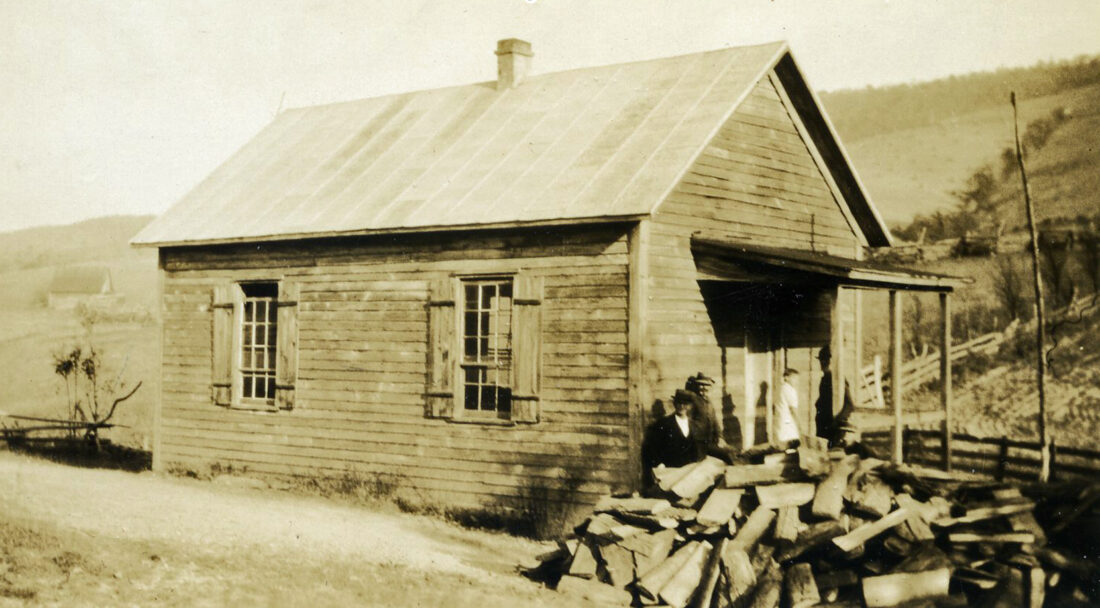
Sausage Eating Event March 9, 2022
An article written for Eastern Mennonite School
We Will Follow
Yesterday I preached the morning sermon at a Mennonite church in Hartville, Ohio. That’s the town where I grew up. They’ve asked me to write a history book about the congregation.
At the end of the worship service, we sang, “We will follow, we will follow Jesus, we will follow everywhere he goes.” A simple Zimbabwean traditional tune, the song gave congregants the chance to affirm our desire to be followers of Christ.
The message was entitled “Called to Remember,” and I used Exodus 17:14 for my thoughts. Moses had been called to write down Israel’s stories in order to remember them.
I won’t soon forget the simple affirmation and conclusion in song after I preached. With instruments and congregational voices, we affirmed that we want to follow Jesus everywhere he goes.